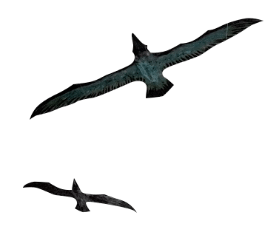Islands and Isolation
In his book on the Icelandic film Nói the Albino, film scholar Björn Norðfjörð uses the term “islandness” to express the separation that comes from being geographically, culturally, and historically detached from the continent. It means more than just being an island, it’s something to do with a marked separation from all things big, central and populous, and it can happen on many levels, concrete and abstract. Islandness builds upon the fact of being on or from an island. Islands are always relational. If there were no continents to be compared to, the concept of islands wouldn’t exist. Though based on a geographical formation, islandness is a cultural, mental, and emotional phenomenon.
The North Atlantic island nations of the Faroe Islands, Greenland, and Iceland all have their unique experience of islandness and it comes through in their cultural artifacts. In the 2017 Faroese film Dreams by the Sea, there are multiple islands. Of the Faroe Islands’ 52,000 inhabitants, the main island Streymoy contains 24,000 of them, of which about 21,00 live in or adjacent to the capital Tórshavn. The film, however, does not take place in the city, but in a nondescript village far away from it. Its two main characters, Ester and Ragna, are like islands to the small community in which they live, and, by the end of the film, they realize that they are islands to each other.
In Dreams by the Sea, the drama is not in a narrative, but in the emotional nuance if its two main characters. We see closeups of their faces as much as we see wide shots of the Faroese terrain. It is a film of where the landscapes are both interior and exterior, expressed as much on the contours of the face as much as the contours of the land. In such a beautifully shot film, the boundaries between the body and its surroundings approach indistinction. We experience both the visual and geographical splendor of the islands as well as the islandness that they characters feel.
Merriam-Webster gives three definitions of “island:” 1) “a tract of land surrounded by water and smaller than a continent,” 2) “something resembling an island especially in its isolated or surrounded position,” and 3) “an isolated group or area.” The last definition is interesting because of the word “isolated,” which gives off the feeling of something static and unmoving; it’s a description of a physical location. The word “separation,” though very similar in meaning, is slightly different. While I would say that something or someone is isolated, the focus is on the thing in solitude, whereas separated yearns for an object that is lost, separated, missing, mourned, etc. The difference, for me at least, is the relation to someone else. “I am isolated” describes the state of my body. “I am separated from my loved ones” expressed my state of being. The distinction that I tried to make between these two words and “island” and “islandness” are viscerally relevant in the era of COVID-19. While there is little we can do about the islands of our apartments and our houses, we have witnessed amazing creativity and solidarity in combating the islandness.
Brad Harmon is completing his M.A. in Scandinavian Studies at the University of Washington, where he is writing a thesis on Swedish poet Katarina Frostenson from an ecofeminist philosophical perspective. His research primarily concerns twentieth-century Nordic, German, and Russian poetry and film and their intersections with continental philosophy, environmental studies, and cultural studies. His article “Faroese Cinema and Transnational Nation-Building” is forthcoming in June 2020 in Journal of Scandinavian Cinema. He has taught Swedish at UW and at the Scandinavian Language Institute.


